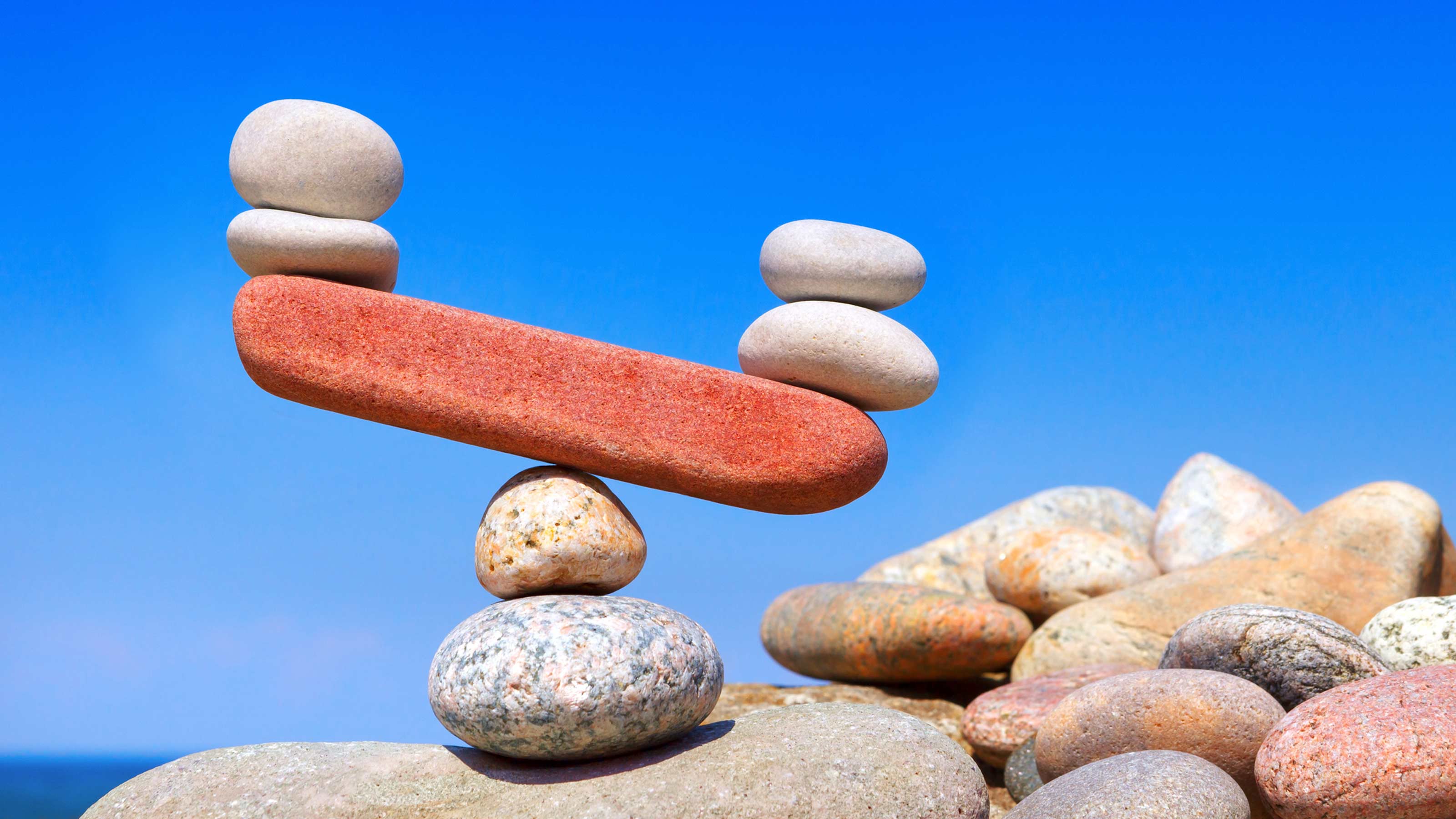4 Ways to Dilute a Concentrated Stock Risk
For investors, it’s possible to have too much of a good thing, and it can be disastrous to have too much of a bad thing. Is your portfolio overweighted in a single stock? Here’s how to tell and some strategies to help regain your balance.


Investors may have seen a large run-up in their technology stocks. Stocks like Apple, Facebook, Google and Amazon all have had a great run. However, there is a reason for the saying “Don’t put all your eggs in one basket.” It may have something to do with the risk of owning too much of one stock.
According to a recent Goldman Sachs Asset Management study, 23% of the stocks in the Russell 3000 Index (a broad measure of the U.S. stock market) lost more than a fifth of their value in an average calendar year from 1986-2019. The study found the average stock was more than three times as volatile as the Russell 3000 index itself (Source: FactSet, GSAM).

Source: Goldman Sachs Asset Management
Given the research from Goldman Sachs, investors with a large concentration in one stock may be on a wild and risky ride in the years ahead.
From just $107.88 $24.99 for Kiplinger Personal Finance
Become a smarter, better informed investor. Subscribe from just $107.88 $24.99, plus get up to 4 Special Issues

Sign up for Kiplinger’s Free Newsletters
Profit and prosper with the best of expert advice on investing, taxes, retirement, personal finance and more - straight to your e-mail.
Profit and prosper with the best of expert advice - straight to your e-mail.
Volatility is a measure of risk, or how much the stock price fluctuates. If a single stock is more than three times as volatile as the index, brace yourself for a wild ride. Volatility on the upside is a good thing. Negative volatility, or price decreases — as in case of Boeing, which is down 38% in the past year — can lead to steep losses (Source: Morningstar). That is why investment advisers preach diversification. Spreading the risk around different stocks can mitigate the effects any one stock has on the whole portfolio.
How Much Is Too Much of One Stock?
Despite research to the contrary, some investors are overweighted to one stock. When one stock is more than 10% of the portfolio, we call this a concentrated stock position, and a red flag goes up. There may be several reasons for the concentrated stock position. Some can't sell their company stock due to employer restrictions. Others don't want to pay the income tax on the gain. Some think the stock may go higher.
Investors should not underestimate the risk of owning too much of one stock – see Lehman Brothers, WorldCom, Enron, Pier One, Frontier Communications and Hertz to name a few examples.
What to Do about an Overweighted Portfolio
If you are concerned about the risk one large stock position has on your retirement nest egg (as you should be), here are four solutions to consider:
Gift Shares to Charity
Gifting stock to a qualified charity is one idea. Donating appreciated shares allows you to get rid of the stock and not incur the tax from selling. You want to gift the shares with the lowest cost-basis or the largest taxable gain.
Sell with Tax-Loss Harvesting in Mind
Before you sell the stock, see if you can use losses in other parts of the portfolio to offset the taxable gain. We call this tax-loss harvesting. This can only be done in non-retirement accounts. We manage several portfolios that actively harvest losses throughout the year when they come up. We try to match the harvested losses to the gain incurred from selling the concentrated stock position. This helps reduce the net taxable gain at the end of the year. The smaller the taxable gain, the less tax owed, which is a good thing.
Taxpayers can also deduct $3,000 of losses from their federal taxable income each year. Unused losses are carried forward to future years on your federal tax return, and some states may allow you to carry forward unused losses on your state tax return as well.
Exchange Fund
For more sophisticated and wealthy investors, an Exchange Fund swaps your stock for a pool of diversified stocks. Since it is a swap, and not a sale, there is no immediate income tax due. The benefit is the new pool of stocks provides greater diversification. Exchange Funds are relatively new, available only to Qualified Purchasers (defined as those with investable assets greater than $5 million) and illiquid — generally a seven-year lock-up.
Zero-Cost Collar

Investors can also use options to mitigate the downside of a stock's loss. One strategy is a "zero-cost collar." A zero cost-collar involves writing a call option — selling a call — and using the income to buy a put option on the underlying stock. Buying the put option gives you the right to sell the stock at a predetermined price. That comes in handy if the stock price drops. Writing the call option provides income to buy the put option, hence the "zero-cost."
It doesn’t always work out to a zero-cost, but it is usually close. The figure above illustrates a collar strategy with Chubb Stock (ticker symbol CB). Remember: Options involve risk, are complicated, and can reduce your upside. It's best to consult with an experienced professional before implementing.
The Biggest Risk
The biggest risk, in my opinion, is not having a plan to deal with a concentrated stock position. Letting the years go by without doing anything only complicates the problem. The stock position may get larger and the tax bill higher. In my opinion, a diversified portfolio should not have more than 10% of the assets in any one stock.
Luckily, as described above, there are several ways to manage a large stock position in a tax-efficient and smart way. It all starts with a plan.
The views and opinions expressed in this article are solely those of the author and should not be attributed to Summit Financial LLC. Investment advisory and financial planning services are offered through Summit Financial, LLC, an SEC Registered Investment Adviser, 4 Campus Drive, Parsippany, NJ 07054. Tel. 973-285-3600 Fax. 973-285-3666. This material is for your information and guidance and is not intended as legal or tax advice. Legal and/or tax counsel should be consulted before any action is taken.
Investment advisory and financial planning services are offered through Summit Financial LLC, an SEC Registered Investment Adviser, 4 Campus Drive, Parsippany, NJ 07054. Tel. 973-285-3600 Fax. 973-285-3666. This material is for your information and guidance and is not intended as legal or tax advice. Clients should make all decisions regarding the tax and legal implications of their investments and plans after consulting with their independent tax or legal advisers. Individual investor portfolios must be constructed based on the individual’s financial resources, investment goals, risk tolerance, investment time horizon, tax situation and other relevant factors. Past performance is not a guarantee of future results. The views and opinions expressed in this article are solely those of the author and should not be attributed to Summit Financial LLC. Links to third-party websites are provided for your convenience and informational purposes only. Summit is not responsible for the information contained on third-party websites. The Summit financial planning design team admitted attorneys and/or CPAs, who act exclusively in a non-representative capacity with respect to Summit’s clients. Neither they nor Summit provide tax or legal advice to clients. Any tax statements contained herein were not intended or written to be used, and cannot be used, for the purpose of avoiding U.S. federal, state or local taxes.
Profit and prosper with the best of Kiplinger's advice on investing, taxes, retirement, personal finance and much more. Delivered daily. Enter your email in the box and click Sign Me Up.

Michael Aloi is a CERTIFIED FINANCIAL PLANNER™ Practitioner and Accredited Wealth Management Advisor℠ with Summit Financial, LLC. With 21 years of experience, Michael specializes in working with executives, professionals and retirees. Since he joined Summit Financial, LLC, Michael has built a process that emphasizes the integration of various facets of financial planning. Supported by a team of in-house estate and income tax specialists, Michael offers his clients coordinated solutions to scattered problems.
-
 Original Medicare vs Medicare Advantage Quiz: Which is Right for You?
Original Medicare vs Medicare Advantage Quiz: Which is Right for You?Quiz Take this quick quiz to discover your "Medicare Personality Type" and learn whether you are a Traditionalist, or a Bundler.
-
 Ask the Editor: Capital Gains and Tax Planning
Ask the Editor: Capital Gains and Tax PlanningAsk the Editor In this week's Ask the Editor Q&A, Joy Taylor answers questions on capital gains tax rates and end-of-year tax planning
-
 Time Is Running Out to Make the Best Tax Moves for 2025
Time Is Running Out to Make the Best Tax Moves for 2025Don't wait until January — investors, including those with a high net worth, can snag big tax savings for 2025 (and 2026) with these strategies.
-
 Time Is Running Out to Make the Best Moves to Save on Your 2025 Taxes
Time Is Running Out to Make the Best Moves to Save on Your 2025 TaxesDon't wait until January — investors, including those with a high net worth, can snag big tax savings for 2025 (and 2026) with these strategies.
-
 4 Smart Ways Retirees Can Give More to Charity, From a Financial Adviser
4 Smart Ways Retirees Can Give More to Charity, From a Financial AdviserFor retirees, tax efficiency and charitable giving should go hand in hand. After all, why not maximize your gifts and minimize the amount that goes to the IRS?
-
 I'm an Insurance Pro: If You Do One Boring Task Before the End of the Year, Make It This One (It Could Save You Thousands)
I'm an Insurance Pro: If You Do One Boring Task Before the End of the Year, Make It This One (It Could Save You Thousands)Who wants to check insurance policies when there's fun to be had? Still, making sure everything is up to date (coverage and deductibles) can save you a ton.
-
 3 Year-End Tax Strategies for Retirees With $2 Million to $10 Million
3 Year-End Tax Strategies for Retirees With $2 Million to $10 MillionTo avoid the OBBB messing up your whole tax strategy, get your Roth conversions and charitable bunching done by year's end.
-
 'Politics' Is a Dirty Word for Some Financial Advisers: 3 Reasons This Financial Planner Vehemently Disagrees
'Politics' Is a Dirty Word for Some Financial Advisers: 3 Reasons This Financial Planner Vehemently DisagreesYour financial plan should be aligned with your values and your politics. If your adviser refuses to talk about them, it's time to go elsewhere.
-
 For a Move Abroad, Choosing a Fiduciary Financial Planner Who Sees Both Sides of the Border Is Critical
For a Move Abroad, Choosing a Fiduciary Financial Planner Who Sees Both Sides of the Border Is CriticalWorking with a cross-border financial planner is essential to integrate tax, estate and visa considerations and avoid costly, unexpected liabilities.
-
 I'm a Financial Adviser: This Tax Trap Costs High Earners Thousands Each Year
I'm a Financial Adviser: This Tax Trap Costs High Earners Thousands Each YearMutual funds in taxable accounts can quietly erode your returns. More efficient tools, such as ETFs and direct indexing, can help improve after-tax returns.
-
 A Financial Adviser's Guide to Divorce Finalization: Tying Up the Loose Ends
A Financial Adviser's Guide to Divorce Finalization: Tying Up the Loose EndsAfter signing the divorce agreement, you'll need to tackle the administrative work that will allow you to start over.